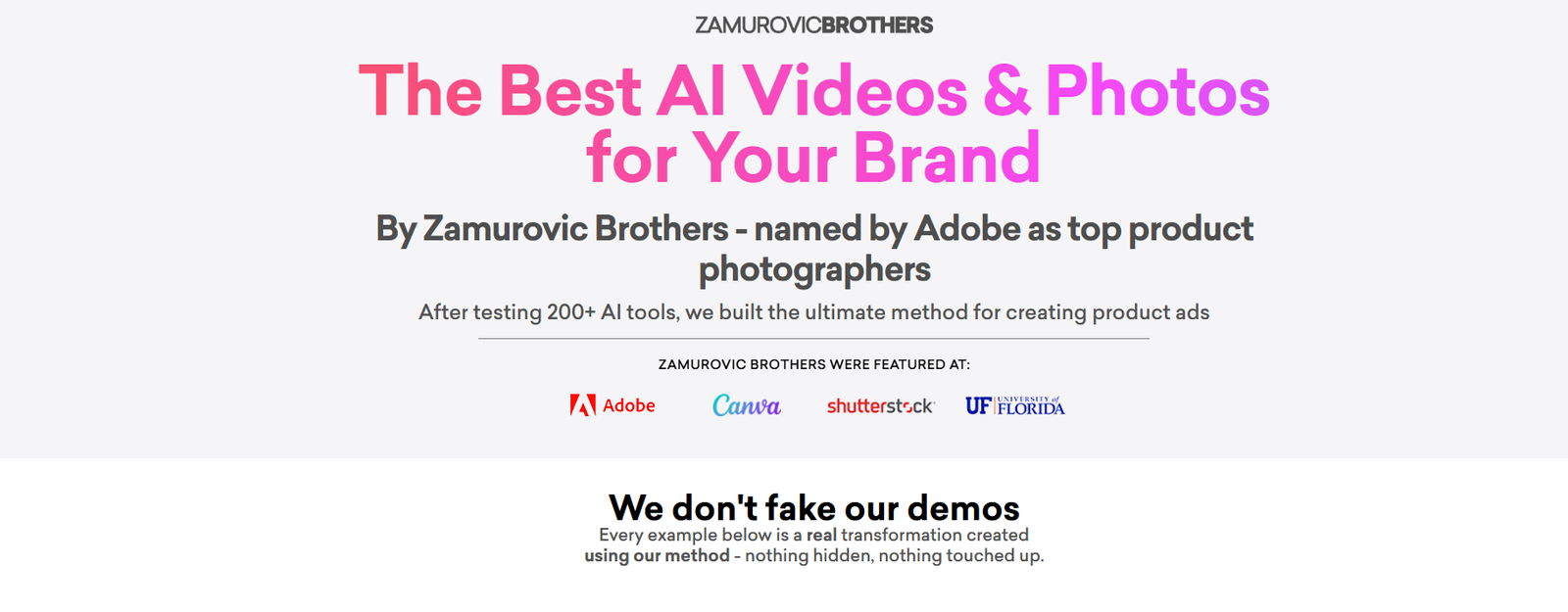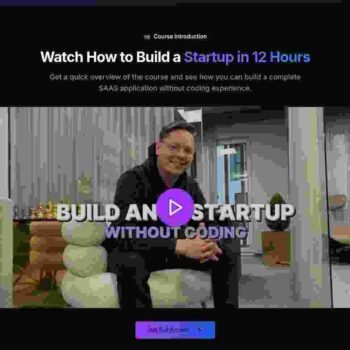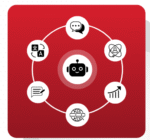Zamurovic Brothers – Ai for Product & Fashion Course V2.0
$199.00 Original price was: $199.00.$39.00Current price is: $39.00.
Unlocking the Future of Fashion & Product Design with AI
Introduction
In the rapidly evolving world of design and retail, artificial intelligence is no longer a novelty—it is a key differentiator. The Zamurovic Brothers – Ai for Product & Fashion Course V2.0 stands at the nexus of creativity and technology. This advanced training program empowers designers, entrepreneurs, and creatives to harness AI tools for fashion conceptualization, product development, trend forecasting, and beyond.
In this deep dive, we’ll explore why this course is unique, how it compares to alternatives, the skills you’ll gain, and who stands to benefit most. Along the way, we’ll interweave relevant keywords such as “fashion AI training,” “product design with machine learning,” “AI-assisted trend forecasting,” “digital garment generation,” and “creative tools for designers.”
Why AI Is Revolutionizing Product and Fashion Design
Speed and iteration: Traditional ideation cycles can be slow. With AI, designers can quickly generate variations, color palettes, textures, or patterns, enabling rapid prototyping.
Trend prediction: Advanced models can analyze large datasets—social media, runway images, textile catalogs—to forecast upcoming color palettes, silhouettes, and consumer preferences.
Personalization at scale: AI-driven customization allows brands to offer made-to-measure or style suggestions tailored to each customer based on behavior data.
Cost optimization: Automating parts of the design workflow reduces repetitive tasks—pattern generation, texture mapping, or fit simulations—freeing designers to focus on creative decisions.
These capabilities are not theoretical—they’re already powering innovation in leading fashion houses and product studios. The challenge is knowing how to integrate AI into your design stack. That’s where a course like this becomes indispensable.
What Makes “Zamurovic Brothers – Ai for Product & Fashion Course V2.0” Stand Out
Let’s break down the distinguishing features of this flagship training.
1. Hands-On, Project-Based Learning
Rather than generic lectures, students complete real design challenges: creating capsule collections, AI-generated product mockups, predictive trend boards, garment drape simulations, and more. This is not just theory—it’s applied AI in fashion and product design.
2. Modern AI Tools and Frameworks
The curriculum covers leading tools and frameworks: generative adversarial networks (GANs), diffusion models, neural style transfer, CLIP / diffusion hybrids, and more. Participants learn how to fine-tune pre-trained models, control outputs via text prompts, and integrate custom datasets (e.g. your brand archive).
3. Curated Fashion & Product Datasets
Access to curated image and textile datasets specific to apparel, footwear, accessories, and consumer goods. These domain-specific datasets help students train or guide models for more realistic, market-relevant output.
4. Mentor Feedback & Community Support
Feedback loops from the Zamurovic instructors, peer review, critique sessions, and community forums. This ensures designers refine their work and avoid the pitfalls of “black box” use of AI.
5. Version 2.0 Upgrades
The “V2.0” edition includes the latest AI advancements—improved model architectures, integration with real-time tools (e.g. generative plugins for Photoshop/Blender), better UI, and updated modules for sustainability and ethical AI in design.
Core Modules & Learning Outcomes
Below is an overview of modules and what you’ll achieve in each segment.
| Module | Key Topics | Outcomes / Skills |
|---|---|---|
| Introduction to AI in Creative Fields | Fundamentals of machine learning, neural nets, dataset ethics | Understand the underlying theory—so you can confidently guide tools |
| Dataset Curation & Preprocessing | Image augmentation, annotation, filtering, domain adaptation | Create robust datasets for fashion or product domains |
| Style Transfer & Texture Mapping | Neural style transfer, texture synthesis, material blending | Generate fabrics, textures, patterns that match brand aesthetic |
| Generative Models & Prompt Engineering | GANs, diffusion models, prompt crafting, conditioning | Guide AI to produce desired silhouettes and outputs |
| Trend Forecasting with AI | Time series analysis, clustering, social media mining | Predict upcoming colors, styles, consumer preferences |
| 3D & Draping Simulation | Integrating AI with 3D tools like CLO, Marvelous Designer | Simulate how garments drape, move, fit |
| Prototype to Manufacturing Integration | Vector export, CAD workflows, tech-packs | Bridge AI output to real manufacturing systems |
| Branding, Marketing & Ethical AI | Responsible AI use, bias mitigation, brand storytelling | Use AI in brand identity without undermining authenticity |
| Capstone Project | Design a small capsule collection or product line using AI | Showcase your end-to-end workflow and build a portfolio piece |
By the end, you should be able to say: “I can ideate, iterate, and publish AI-driven fashion or product designs with confidence.”
Use Cases & Success Stories
Independent fashion labels: Use AI to prototype seasonal collections at lower cost.
Footwear design studios: Generate innovative silhouettes and explore variations rapidly.
Interior goods & accessories brands: Blend product form exploration with surface pattern generation.
Textile houses: Predict trending prints and supply custom designs to clients.
Design consultancies: Offer AI consulting as an add-on service to clients.
Past graduates of the earlier version have created licensed capsule lines, collaborated with boutiques, launched AI-infused brands, or gotten hired by innovation labs at major fashion houses.
How This Course Compares to Alternatives
There are many offerings in “AI for design,” but here’s how this stands apart:
Some courses are tool-centric (only teaching one software) rather than offering a full pipeline.
Others focus only on theory and neglect real design application or feedback.
Many treat fashion superficially, without covering manufacturing or real technical output.
The Zamurovic Brothers – Ai for Product & Fashion Course V2.0 bridges concept to delivery, combining creative, technical, marketing, and ethical aspects.
In short: this program is holistic, domain-specific, project-based, and community supported—making it more robust than generic “AI for creatives” bootcamps.
SEO & Content Strategy Around This Topic
To help your content outrank competitors, here are effective supporting keywords and content angles you can weave:
“AI in fashion design course”
“machine learning for product development”
“creative AI workflows for designers”
“fashion trend prediction with AI models”
“generative design tools for apparel”
“AI textile pattern generation”
“ethical AI in fashion industry”
“how to use GANs for clothing design”
“prompt engineering for fashion images”
“AI-driven product prototyping”
“deep learning for fashion startup”
“AI sustainable fashion design”
“AI tools for designers 2025”
“integrating AI with CAD for apparel”
You can also write supporting blog posts such as “How to fine-tune diffusion models on your fashion archive,” or “Comparing GAN vs diffusion in pattern generation,” that link back to your main course page. That helps build authority and internal linking.
Tips to Maximize Enrollment & Visibility
Offer a free mini-course or sample module (e.g. “AI basics for designers”) to collect leads.
Showcase student portfolios—publish case studies and before/after transformations.
Offer scholarship or limited discounts to early adopters.
Run webinars or live demos showing how AI generates fashion sketches.
SEO optimize pillar content with cluster articles (e.g. “AI in textile design,” “trend forecasting with ML”).
Leverage partnerships with design schools, fashion tech incubators, and influencers.
Use video & visuals—AI workflows, timelapses, comparisons before/after.
Encourage student-generated content (Instagram reels, TikTok of AI designing) to spread word-of-mouth.
Addressing Objections & Concerns
“Won’t AI replace designers?”
Not in the near term. AI is a collaborator—not a replacement. The human designer’s role evolves to directing models, curating output, refining style, and making strategic decisions.“I don’t have coding skills.”
The curriculum is designed for creative professionals. While some technical segments exist, you don’t need to be an expert coder. Workshops will walk you through necessary scripts or GUI tools step by step.“Quality may look synthetic or unrealistic.”
With good prompt design, fine-tuned models, curated datasets, and human curation, AI output can reach professional standard—and often pushes you to unexpected creative directions.“Ethical concerns and bias.”
The course includes responsible AI modules: dataset bias mitigation, fair representation, audit trails, and transparent use. This ensures your designs are inclusive.“How do I turn AI mockups into real products?”
Solid integration with CAD, tech packs, garment export, sample production, and brand workflow is part of the training. You won’t be left with unusable visuals.
Who Should Join & What to Expect
Ideal participants include:
Fashion designers and apparel entrepreneurs looking to innovate
Product designers and accessory-makers wanting generative tools
Textile and print designers seeking AI techniques
Creative technologists bridging art and code
Startup founders in fashion-tech or design tech spaces
If you enroll, expect:
To spend a few hours per week on video lessons, exercises, and projects
To engage with a community of peers and mentors
To gradually build a mini collection or product line as your capstone
To leave with a portfolio piece you can show to clients, brands, or employers
FAQs (Your Questions Answered)
Q: Can I use the skills in non-fashion industries?
Yes. Many techniques (texture generation, form exploration, pattern design) apply to industrial goods, furniture, home décor, etc.
Q: What software prerequisites do I need?
Basic familiarity with design software like Photoshop, Illustrator, or Blender helps—but not mandatory. The course covers tool integration.
Q: Will I own the rights to generated designs?
Yes, you retain full ownership of your outputs and can commercialize them without royalty or license entanglement.
Q: How long is the course?
Typically 8–12 weeks (self-paced or cohort style), depending on version offerings.
Q: Is there mentorship or review?
Yes—ongoing feedback, critique sessions, and instructor office hours are baked into the program.
Conclusion
By enrolling in Zamurovic Brothers – Ai for Product & Fashion Course V2.0, you position yourself at the forefront of a new design paradigm—one where human intuition meets algorithmic creativity. You won’t just learn tool tips; you’ll master an end-to-end production workflow, from AI ideation to real product integration.









